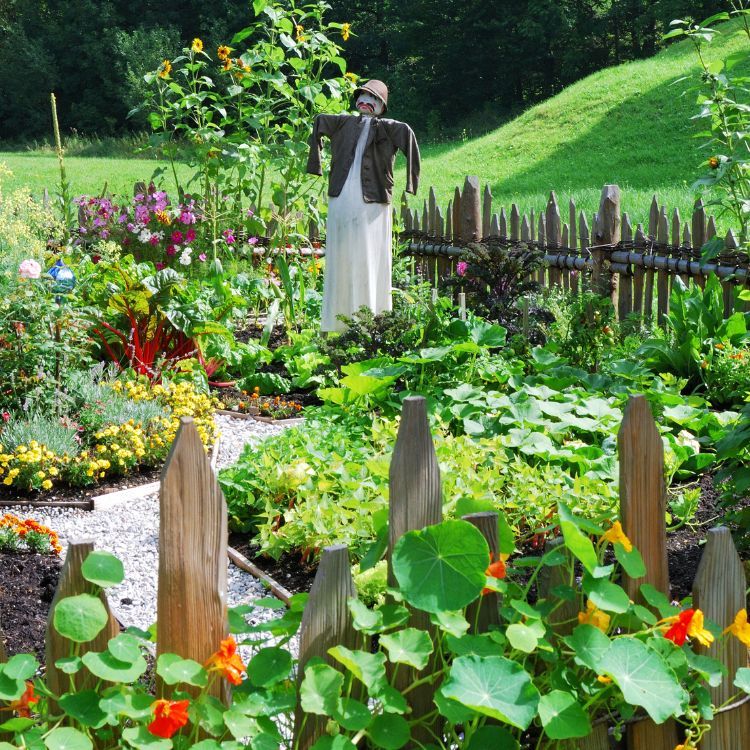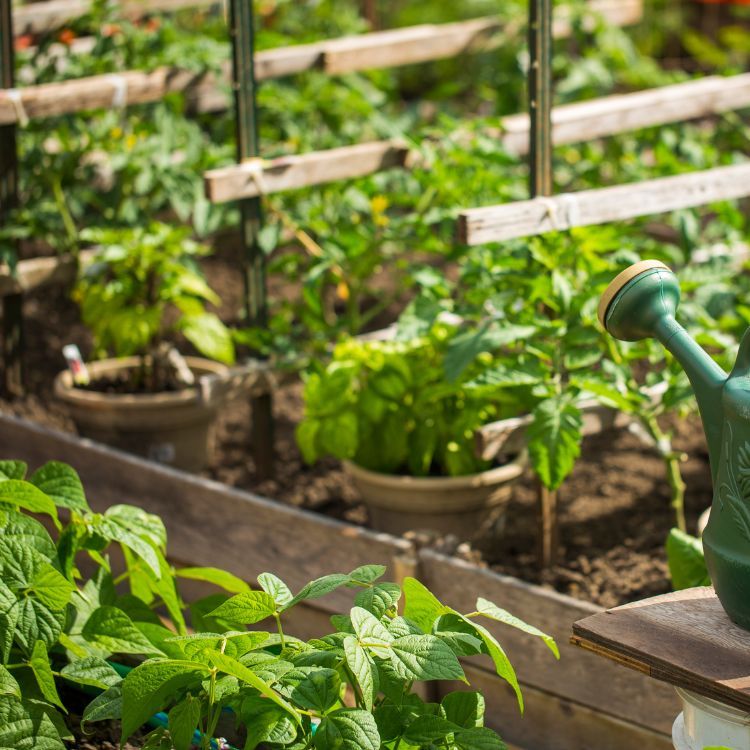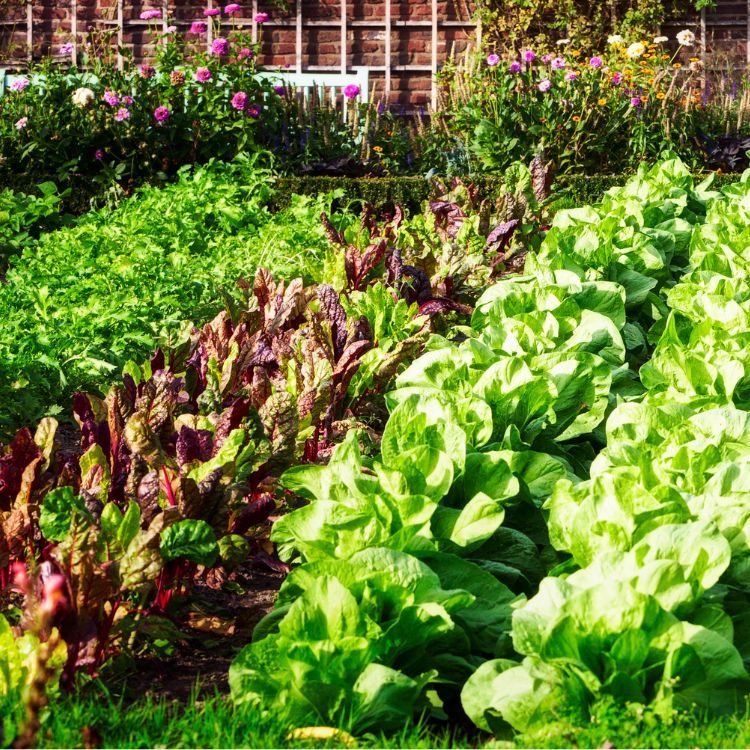
Article-at-a-Glance
Discover the essentials of starting an urban survival garden with native plants.
Learn how to assess your urban space and select the right plants for your environment.
Get tips on maximizing limited spaces through vertical and container gardening.
Understand the importance of soil, sunlight, and proper watering in an urban setting.
Explore how to foster an ecosystem with pollinators and beneficial insects.
Why Every Urban Dweller Needs a Green Refuge
Imagine a slice of nature right in your concrete surroundings—a place where greenery thrives and you can touch the soil. This isn’t just a dream; it’s an urban survival garden, and it’s something everyone living in the city can and should create. It’s not only about adding a splash of color to your balcony or rooftop; it’s about reclaiming a piece of the earth and nurturing life amidst the urban sprawl. And here’s the thing: you don’t need a green thumb to get started; you just need the willingness to try.
The Impact of Native Plants on Urban Biodiversity
When you choose native plants for your urban garden, you’re doing more than just beautifying your space. You’re contributing to the local ecosystem and biodiversity. Native plants are the foundation for attracting and sustaining local wildlife, including essential pollinators like bees and butterflies. They’re adapted to the local climate and soil, making them more resilient and easier to maintain than their exotic counterparts.
By integrating native plants into our urban landscapes, we not only enhance the visual appeal but also bolster the health of our local ecosystems.
Selecting the Right Plants
Assessing Your Urban Environment
Before you rush to buy seeds or seedlings, take a moment to look around your space. How much sunlight does it receive? What’s the air quality like? How much room do you have? These factors will determine which plants will thrive in your urban garden. You might have to get creative with shade-tolerant plants if direct sunlight is scarce, or opt for hardier species if air pollution is a concern.
Top Native Plants for City Living
Now, let’s talk about some top contenders for your urban oasis. Herbs like basil and mint do well in small spaces and can be used in your kitchen. If you have a bit more room, consider berry bushes or dwarf fruit trees. For flowers, black-eyed Susans and purple coneflowers are not only beautiful but also attract pollinators. Remember, the best plants for your garden will depend on your specific environment and the effort you’re willing to put in.
Maximizing Limited Spaces

Space is often at a premium in the city, but that doesn’t mean you can’t have a thriving garden. It’s all about making the most of what you have. Let’s dive into how you can grow your garden upwards and in containers to fit into even the smallest of spaces.
Vertical Gardening: Utilize walls and fences by installing planters or creating a trellis system for climbing plants like ivy or beans.
Container Gardening: Almost any plant can grow in a container. Choose pots with good drainage and consider mobile containers to chase the sun.
With these strategies, you can turn even a tiny balcony into a lush, productive garden. It’s all about optimizing the space you have and selecting plants that can thrive in those conditions.
Plant Growth Optimization

Thriving plants start with the basics: good soil and the right amount of sunlight. In an urban environment, ensuring your plants have these can be a bit of a challenge, but it’s far from impossible. Let’s break down how you can create the ideal growth conditions for your urban survival garden.
Soil and Sunlight: The Foundations of Growth
The soil is your plants’ home. It provides nutrients, water, and support for their roots. In the city, you might not have access to the fertile earth, but you can still create a rich environment with the right potting mix. Look for organic mixes, or better yet, make your own by combining compost with perlite and peat moss for drainage. As for sunlight, observe the patterns of light throughout the day in your space. Most vegetables and fruits need at least six hours of direct sunlight to thrive, so place them accordingly.
And if sunlight is scarce, don’t fret. Leafy greens like spinach and kale are more tolerant of shade and can still provide you with a bountiful harvest.
Water Wisdom: Irrigation Tips for the Urban Jungle
Water is life, especially in the urban garden where natural rainfall might not be enough. But overwatering can be just as harmful as underwatering. The key is to water deeply but infrequently, encouraging strong root growth. If you’re not sure when to water, stick your finger into the soil. If it’s dry an inch below the surface, it’s time to water. And remember, early morning is the best time to water, reducing evaporation and giving plants time to dry out, which helps prevent diseases.
Year-Round Urban Gardening Techniques
Don’t let the changing seasons stop you from enjoying fresh produce all year round. With a few adjustments, you can keep your garden productive through the cold and warmth.
Seasonal Plant Care Strategies
As the seasons change, so should your gardening strategies. In the spring and summer, focus on plants that love the warmth, like tomatoes and peppers. When fall approaches, switch to cool-weather crops like broccoli and carrots. And don’t forget about winter! With some insulation, like a cold frame or greenhouse, you can grow hardy greens even in the chilliest months.
Protecting Your Plants from Urban Pollutants
Urban areas can expose plants to pollutants that can hinder their growth or even harm them. Protect your plants by placing them away from busy streets and using barriers like hedges or trellises. Regularly washing the leaves can also help remove dust and grime, allowing your plants to breathe and absorb sunlight more effectively.
Ecosystem Harmony: The Community Effect
Your urban garden isn’t just for you; it’s part of a larger ecosystem. By attracting pollinators and beneficial insects, you can create a balanced, self-sustaining environment right on your balcony or rooftop.
Encouraging Pollinators and Beneficial Insects
Pollinators are vital for the success of many plants. Attract bees, butterflies, and other helpful insects by planting a variety of flowers, especially those with open petals and vibrant colors. Beneficial insects like ladybugs and lacewings can help control pests naturally, reducing your need for chemical interventions.
Composting: Waste Reduction and Nutrient Recycling
Composting is a fantastic way to reduce kitchen waste and enrich your soil. Even in a small space, you can compost with a sealed container or worm bin. This natural process recycles nutrients back into your garden, promoting healthier plant growth and reducing your environmental footprint.
Overcoming Urban Gardening Challenges
Urban gardening is an incredibly rewarding pursuit, but it does come with its fair share of challenges. Space is often limited, light can be obstructed by buildings, and sometimes even local regulations can impose restrictions on your green dreams. However, with a little creativity and determination, these obstacles can be overcome, allowing you to cultivate a thriving garden in the heart of the city.
Dealing with Limited Light and Space
When sunlight is scarce, your plant choices and their placement become crucial. Opt for plants that can tolerate or even prefer shaded conditions. Think leafy greens like lettuce and herbs such as parsley or chives. If space is tight, go vertical. Use wall planters, hanging baskets, and trellises to grow upwards instead of outwards. Reflective surfaces like mirrors or shiny metal can also help to redirect light to your plants.
Navigating Regulations and Restrictions
It’s important to be aware of and comply with any local ordinances or building rules that apply to your gardening activities. Some cities have restrictions on the types of plants you can grow, or how much water you can use. If you’re part of a community with a homeowners’ association, check their guidelines too. It’s always better to be informed than to face fines or have to remove your garden.
Engage with your community. Share your vision with neighbors and local officials. Often, they can be your allies, and together, you might even improve or adjust regulations to support urban gardening efforts.
FAQ
Got questions? Here are some common queries urban gardeners have when they’re just starting out:
Can you grow edible plants in an urban environment?
Yes, absolutely! Edible plants don’t discriminate between rural and urban settings as long as their basic needs are met. Herbs, vegetables like tomatoes and peppers, and fruits such as strawberries and dwarf citrus trees can all be grown in urban environments. The key is to select varieties that are suited to the conditions of your space, particularly in terms of light, temperature, and space.
For example, if you have a sunny balcony, tomatoes might thrive, while a shaded patio could be perfect for growing kale or mint. With the right care, you can enjoy a bountiful harvest.
Start with herbs like basil, mint, or cilantro, which are easy to grow and don’t require much space.
Consider container-friendly vegetable varieties like cherry tomatoes, radishes, and spinach.
Don’t overlook fruiting plants that can do well in pots, such as strawberries or dwarf blueberry bushes.
How do you protect urban garden plants from pollution?
Urban environments can expose plants to pollutants that can be harmful. To protect your garden, try to place it in areas where it’s less likely to be affected by car exhaust and industrial emissions. Regularly wiping down leaves can help remove pollutants and improve the plant’s ability to photosynthesize. Choosing plants that are known for their tolerance to pollution, like certain ferns and ivy, can also be beneficial.
What are the benefits of using native plants in city gardening?
Native plants are those that have evolved to thrive in the specific conditions of your local area. They are generally more resistant to local pests and diseases and require less water and maintenance than non-native species. They also provide the necessary habitat for local wildlife, including pollinators like bees and butterflies. By choosing native plants, you’re supporting the local ecosystem and contributing to biodiversity.
How can you create a self-sustaining ecosystem in a small urban garden?
To create a self-sustaining ecosystem, you need to think about the relationships between plants, insects, and other wildlife. Incorporate a variety of plants that flower at different times to provide a continuous source of nectar and pollen for pollinators. Introduce plants that attract beneficial insects that will prey on pests. Composting your kitchen waste can provide nutrient-rich soil, and mulching helps retain moisture and suppress weeds, reducing the need for watering and weeding. Learn more about native plants and ecosystem services to enhance your urban garden.
Example: A balcony garden that includes lavender to attract bees, marigolds to deter pests, and a small compost bin to recycle organic waste into soil amendments creates a mini-ecosystem that’s both beautiful and functional.
Remember, every small ecosystem you create contributes to the larger urban environment, making it a healthier place for everyone.
What are some space-saving techniques for urban gardening?
In urban environments, space is a premium commodity, but with a few clever techniques, you can maximize your gardening potential:
Go vertical: Utilize vertical space with climbing plants, hanging baskets, or tiered planters.
Choose the right containers: Select pots and planters that fit your space and can accommodate the root systems of your chosen plants.
Think creatively: Don’t just limit yourself to traditional planters. Upcycle items like crates, pallets, or even old furniture to create unique planting spaces.
By combining these strategies with a little bit of creativity, you can transform any small space into a green sanctuary that not only provides fresh produce but also a sense of peace and accomplishment.







Leave a Reply